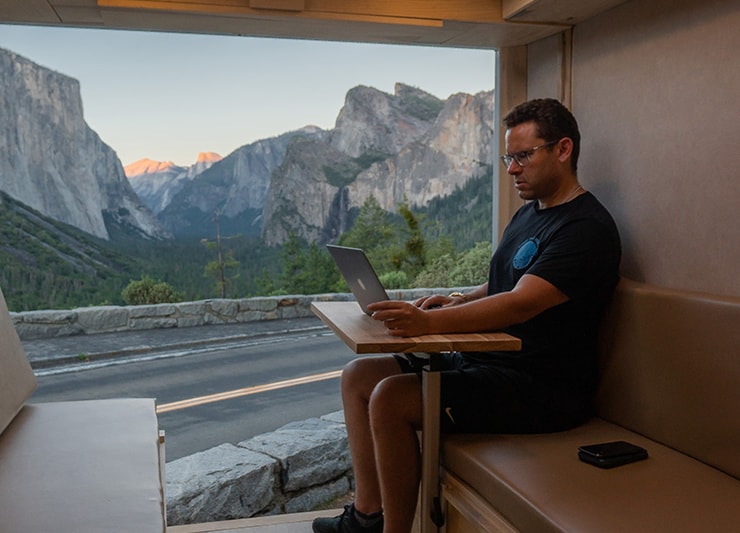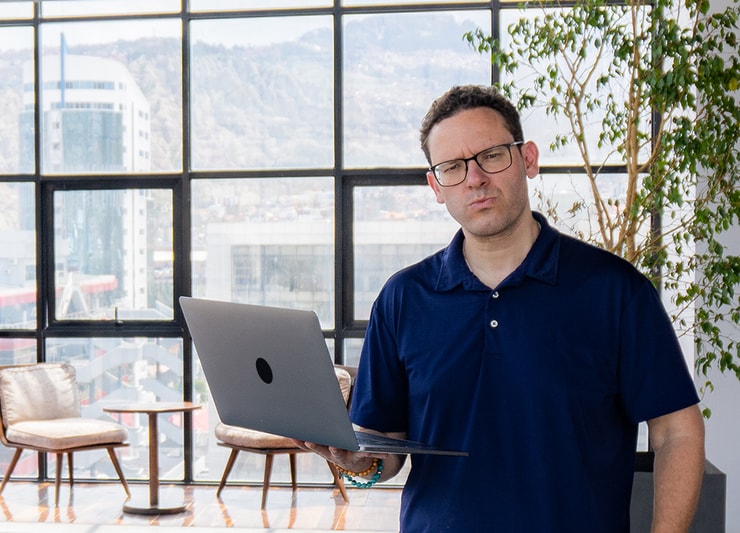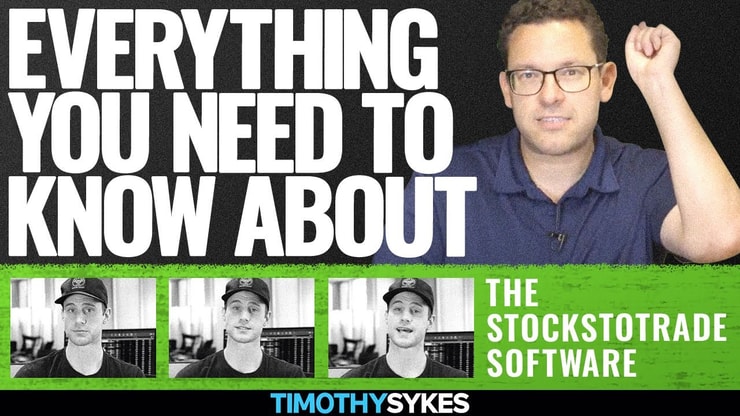As a seasoned trader, I know the importance of a reliable and powerful trading computer. In the fast-paced world of day trading, having the right machine can make a significant difference. It’s not just about speed; it’s about having a system that can handle multiple tasks efficiently, from running complex trading platforms to analyzing vast amounts of market data in real time.
Readers should delve into this article because it offers a comprehensive guide on selecting the best trading computer for 2024, tailored to various trading styles and budgets, ensuring an informed decision for a crucial part of their trading setup.
I’ll answer the following questions:
- What is a trading computer?
- What are the key features of a trading computer?
- Why is the MacBook Pro a good choice for trading?
- What are the 7 best trading computers in 2024?
- What are the key specifications for a trading computer?
- What are the benefits of desktop computers for trading?
- What are the advantages of laptops for mobile traders?
- What should be avoided when choosing a trading computer?
Let’s get to the content!
Table of Contents
- 1 What Is a Trading Computer?
- 2 What Is the Best Trading Computer?
- 3 7 Best Trading Computers in 2024
- 4 Key Specifications for a Trading Computer
- 5 Desktop vs. Laptop for Trading
- 6 Essential Features for Effective Trading
- 7 Operating Systems for Trading Computers
- 8 What To Avoid When Choosing a Trading Computer
- 9 Key Takeaways
- 10 Frequently Asked Questions
- 10.1 Is a Gaming Computer Good for Day Trading?
- 10.2 How Many Computer Screens Do I Need for Trading?
- 10.3 What are the Best Brands for Trading Computers?
- 10.4 What Are the Key Features To Look for in a Trading Computer?
- 10.5 How Does Customer Service Enhance the Experience of Buying a Trading Computer?
What Is a Trading Computer?

A trading computer is a specialized PC designed to handle the demands of day trading. This includes running trading software, monitoring multiple stocks or markets, and processing large volumes of data quickly. The key features that distinguish a trading computer from a regular one are its processor speed, reliability, and the ability to support multiple monitors. In my trading career, having a computer that can keep up with real-time market changes and execute orders without delay has been indispensable.
What Is the Best Trading Computer?
In my trading and teaching career, I’ve always emphasized the importance of a reliable computer. Personally, I use a MacBook Pro for my trading. It’s powerful and portable, perfectly running my favorite trading platform, StocksToTrade.
When it comes to trading platforms, StocksToTrade is first on my list. It’s a powerful day and swing trading platform that integrates with most major brokers. I helped to design it, which means it has all the trading indicators, news sources, and stock screening capabilities that traders like me look for in a platform.
Grab your 14-day StocksToTrade trial today — it’s only $7!
However, it’s crucial to remember that some trading software is designed exclusively for Windows PCs. Ensure your preferred software is compatible with your chosen system. The MacBook Pro’s high-performance cores and robust operating system make it an excellent choice for traders who value efficiency and portability. But, as with any major purchase, it’s wise to consider all options and ensure the computer meets all your trading needs, from processing power to software compatibility.
7 Best Trading Computers in 2024

When selecting the best trading computers for 2024, it’s essential to consider various factors such as performance, price, and reliability. Drawing from my extensive experience in trading and teaching, I have compiled a list of top computers that cater to different needs and budgets. This guide is designed to help traders make an informed decision, ensuring they invest their money in a product that offers the best value and aligns with their trading style. Remember, the right computer is a crucial part of your trading setup, impacting your ability to monitor markets, execute trades, and manage your trading account efficiently. Here’s a concise table to compare the top picks:
Each of these models offers something unique, from the portability of laptops like the MacBook Pro and Lenovo Legion 5 to the powerhouse performance of desktops like the Dell XPS 8950 and OMEN 30L. As a trader, you should consider factors like warranty, customer service, and the availability of lifetime support, which can be crucial for a smooth trading experience. Also, think about the ease of setup, the ergonomics of the keyboard, and the overall package you get for the price you pay. Remember, the best choice varies for each trader, so consider your specific needs, whether it’s for day trading, futures, or other forms of trading.
There’s also the custom option. A tailored day trading computer setup can significantly enhance your trading efficiency. This setup should align with your trading style, whether you’re a scalper needing ultra-fast execution or a swing trader requiring extensive data analysis capabilities. The right setup will support multiple monitors, provide rapid processing speeds, and ensure stable internet connectivity. For a comprehensive guide on creating the ideal day trading computer setup that meets your unique requirements, check out my article on bespoke day trading computer setups.
Razer Blade Pro 17
The Razer Blade Pro 17 is a fusion of performance and style. Its metal case not only gives it a sleek appearance but also enhances its durability, making it one of the sturdiest models available. However, this also contributes to its heavier weight and higher price. For traders who prioritize a large screen, its 17-inch display offers ample real estate, essential for analyzing charts and executing trades. This laptop, with its powerful CPU and high-resolution options, is ideal for traders who need both performance and aesthetics in their trading setup.
At the time of writing, the Razer Blade Pro 17 is $1,799.99 on Amazon.
Apple MacBook Pro 14 (M3, Late 2023)
The Apple MacBook Pro 14 (M3, Late 2023) model is a testament to the blend of power and portability. Its advanced M3 processor handles complex trading applications effortlessly, making it a top choice for serious traders. The MacBook’s high-resolution screen ensures clarity in viewing market data, and its reliable build quality offers a sense of security for traders who invest a lot in their equipment.
At the time of writing, the Apple MacBook Pro 14 (M3, Late 2023) is $2,999.99 on Amazon.
More Breaking News
- LifeWallet’s $5.9 Million Settlements: A Game Changer or a Mirage?
- Growth or Bubble? The Rapid Rise of SKK Stock Unveiled
- Is Genius Group’s Cryptocurrency Strategy the Key to Its Market Leap?
Apple iMac 24-inch (M3, 2023)
Apple’s iMac 24-inch (M3, 2023) is an all-in-one powerhouse. Its vibrant display and cutting-edge M3 cores make it perfect for traders who require a reliable and fast machine. The iMac’s streamlined design saves valuable real estate on a trader’s desk, providing a clutter-free environment for focused trading.
At the time of writing, the Apple iMac 24-inch (M3, 2023) is $1,499.00 on Amazon.
Dell XPS 8950 Desktop
The Dell XPS 8950 Desktop is built for traders who require a high-performance machine that can be customized to their specific needs. Its expandability and top-tier components, including the latest i5 or higher CPUs, make it a versatile choice. This model is particularly suitable for traders who run complex models or simulations.
At the time of writing, the Dell XPS 8950 Desktop is $1,128.99 on Amazon.
Acer Aspire TC-895-UR11 Desktop
For traders operating on a tighter budget, the Acer Aspire TC-895-UR11 Desktop offers a balance between affordability and performance. While it may not have the high-end graphics of more expensive models, it provides enough power for basic trading tasks and is a great entry-level option.
At the time of writing, the Acer Aspire TC-895-UR11 Desktop is $557.00 on Amazon.
OMEN 30L Gaming Desktop PC
The OMEN 30L Gaming Desktop PC, with its robust CPU and efficient cooling system, caters to traders who also have an interest in gaming. Its powerful performance ensures that trading applications run smoothly, making it a good choice for those who need a multi-purpose machine.
At the time of writing, the OMEN 30L Gaming Desktop PC is $4,288.88 on Amazon.
Lenovo Legion 5 Gaming Laptop
The Lenovo Legion 5 Gaming Laptop is for traders who need a high-performance laptop that doesn’t break the bank. It offers excellent value, combining powerful processing capabilities with a reasonable price, ideal for traders who are just starting out and need a reliable but affordable setup.
At the time of writing, the Lenovo Legion 5 Gaming Laptop is $1,022.00 on Amazon.
Key Specifications for a Trading Computer

Selecting a trading computer requires careful consideration of key specifications. From my years of trading and teaching, I’ve seen how crucial it is to have a computer that meets your specific needs. Essential specifications include a fast and reliable processor (think Intel i7 or AMD Ryzen), sufficient RAM (at least 16GB), and a solid-state drive (SSD) for quicker access to data. High-resolution monitors are important for clarity in chart analysis, and a robust graphics card ensures smooth multi-screen setups. Remember, the right configuration can significantly affect your ability to process information quickly and execute trades efficiently.
Laptops have carved out a significant niche, especially for traders seeking a blend of performance and portability. Identifying the best laptops for traders involves considering factors like processing speed, display quality, and overall reliability. These laptops are tailored to meet the demands of trading, ensuring that you can analyze markets and execute trades efficiently. For an in-depth look at the top laptops that stand out in the trading community for their exceptional performance and reliability, dip into my list of the 5 best laptops for traders.
Processor Speed and Performance
This is the heart of any trading computer. Look for recent Intel i7 or i9, or AMD Ryzen processors.
Memory and RAM Requirements
Aim for at least 16GB of RAM. More RAM allows for smoother multitasking.
Hard Drive
SSDs are faster and more reliable than HDDs, crucial for quick data access.
Graphics and Display Quality
A dedicated graphics card like NVIDIA or AMD Radeon ensures better multi-monitor support.
Network Connectivity and Internet Speed
Essential for real-time trading, look for computers with robust ethernet and Wi-Fi capabilities.
Desktop vs. Laptop for Trading

The debate between using a desktop or a laptop for trading hinges on two key factors: power and portability. Desktops generally offer more processing power and are easier to upgrade, making them suitable for traders who need to manage large amounts of data or use complex trading platforms. On the other hand, laptops provide mobility, allowing traders to work from anywhere, which is crucial in a world where trading doesn’t stop. From my experience, the choice depends on your trading style and whether you value power or flexibility more.
Benefits of Desktop Computers for Trading
Desktops typically offer more power, better cooling systems, and easier upgradability. They are ideal for traders who need multiple monitors and anticipate long trading sessions.
Advantages of Laptops for Mobile Traders
Laptops provide mobility, allowing traders to work from anywhere. They are best for traders who travel frequently or have limited space.
I prioritize mobility, so trading laptops are the way to go. These laptops are designed to offer the power of a desktop while providing the flexibility to trade from anywhere. Ideal for traders who are often on the move, these laptops ensure that you stay connected to the markets and your trading tools. They balance processing power, battery life, and display quality to cater to the dynamic needs of mobile trading. To explore the best trading laptops that combine mobility with high performance, check out my recommendations on trading laptops.
Comparing Portability and Power
While laptops offer portability, desktops usually provide more power and a better overall trading setup, especially for complex trading tasks.
Essential Features for Effective Trading

An effective trading setup is not just about the computer itself but also about the entire ecosystem. Key features include support for multiple monitors, which is vital for tracking various stocks and charts simultaneously. A reliable cooling system is important to prevent overheating, especially during long trading sessions. Additionally, ergonomic keyboards and high-quality mice can significantly improve your trading experience. As I often tell my students, investing in these features can enhance your overall efficiency and comfort, which is crucial for sustained trading success.
Multi-Monitor Support
Essential for keeping an eye on different markets and charts.
Cooling Systems for Long Trading Sessions
Prevents overheating during prolonged use.
Durability and Build Quality
Ensures your investment lasts for years.
Operating Systems for Trading Computers
Choosing the right operating system for your trading computer is crucial. Windows is often preferred for its wide compatibility with various trading software. macOS, known for its stability and robust performance, can be a great choice but may have limitations with some trading platforms. Linux offers flexibility but requires a bit more technical know-how. In my teaching, I always stress the importance of selecting an operating system that not only aligns with the trading software you’ll be using but also one that you’re comfortable navigating.
Windows vs. macOS vs. Linux
Windows is widely preferred for its compatibility with most trading platforms. macOS offers stability and robustness, while Linux provides flexibility for power users.
Compatibility with Trading Software
Most trading platforms are compatible with Windows, making it a go-to choice for many traders.
What To Avoid When Choosing a Trading Computer
When choosing a trading computer, there are several pitfalls to avoid. Firstly, don’t underestimate the importance of a fast processor and sufficient RAM; these are crucial for smooth trading operations. Avoid skimping on screen quality; good resolution and size can make a significant difference in your ability to analyze data. Also, consider future needs; opting for a system that can’t be upgraded may limit you as your trading evolves. As I advise my students, make sure to balance cost with functionality – the cheapest option may cost more in the long run if it doesn’t meet your trading needs.
Common Mistakes in Selecting Trading Computers
Avoid outdated processors, insufficient RAM, and underestimating the importance of a fast internet connection.
Overlooking Future Needs and Scalability
Consider future trading needs and choose a system that can be upgraded as your trading evolves.
Key Takeaways

- The best trading computer balances performance, reliability, and value.
- Key specs include processor speed, RAM, storage type, graphics quality, and internet connectivity.
- Choose between desktop and laptop based on your trading style and needs.
Trading isn’t rocket science. It’s a skill you build and work on like any other. Trading has changed my life, and I think this way of life should be open to more people…
I’ve built my Trading Challenge to pass on the things I had to learn for myself. It’s the kind of community that I wish I had when I was starting out.
We don’t accept everyone. If you’re up for the challenge — I want to hear from you.
Apply to the Trading Challenge here.
Trading is a battlefield. The more knowledge you have, the better prepared you’ll be.
What trading computers are on your shopping list? Let me know in the comments — I love hearing from my readers!
Frequently Asked Questions
Is a Gaming Computer Good for Day Trading?
Yes, gaming computers are often suitable for day trading due to their high performance.
How Many Computer Screens Do I Need for Trading?
Most traders benefit from at least two screens, but it depends on your trading style.
What are the Best Brands for Trading Computers?
Brands like Falcon, Dell, and Apple are known for producing high-quality trading computers.
What Are the Key Features To Look for in a Trading Computer?
When selecting the best computers for trading, it’s important to consider everything from the products’ technical specifications to their prices. Key features include a fast processor, ample RAM, and reliable internet connectivity. Additionally, consider the rights associated with the purchase, such as warranties or return policies. A phone with compatible trading apps can also be an essential tool for traders who are on the move.
How Does Customer Service Enhance the Experience of Buying a Trading Computer?
Good customer service is vital when purchasing a trading computer. Customers should look for retailers that offer excellent support, both pre and post-purchase. This includes clear information on shipping policies and timelines, as well as access to technical support via phone in case of any issues or queries.





Leave a reply